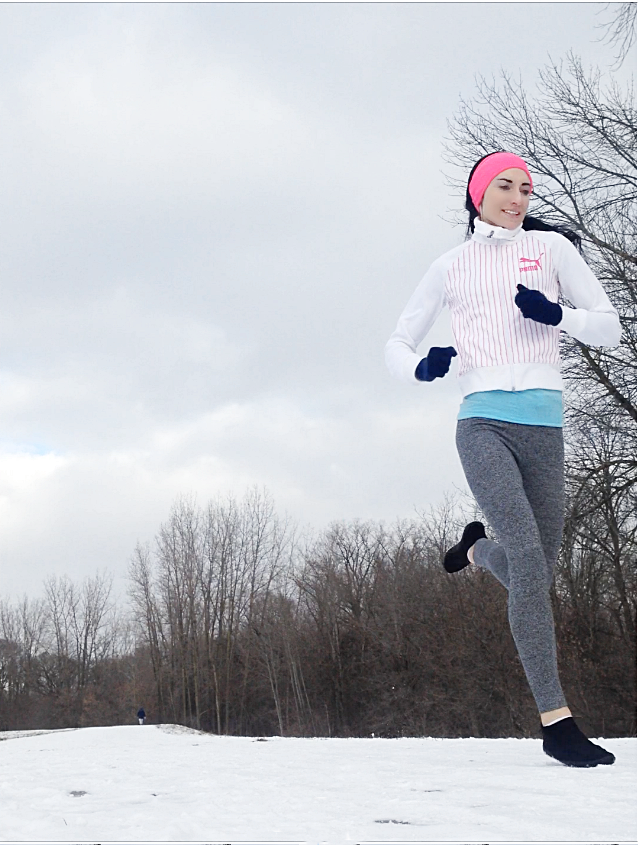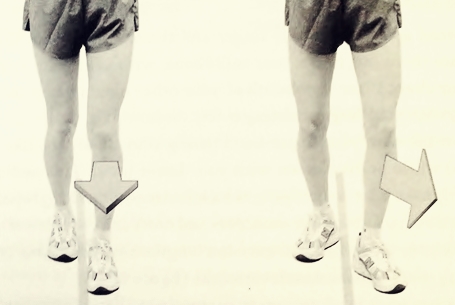It is important that you run properly, with good technique, to run fast and efficiently, and most importantly, safely! One invaluable running tip for beginners is to focus on leg and feet positional alignment when the foot strikes the ground during running, rather than focusing on other mechanical aspects, like arm swing and arm carriage.
To be specific, land on your forefoot, not your heel, and keep your knees and ankles positioned in the direction of where you are running –this was a handy tip I got from Chi Running.
Another important point that helps optimize lower mechanics is avoid running too slow! Trivers et al. found that the fastest runners had optimal knee and ankle alignment compared with slower runners. Interestingly, Manning et al. found that upper body alignment was not a predictor of running speed, suggesting that both arm swing and carriage as well as shoulder and torso rotation does not seem to negatively affect running performance

Handy Chi Running Tips
How to Position Your Knee and Ankle At Touchdown
When you are forefoot running, you want to maintain good knee and ankle alignment because doing so is energetically favorable; whereas alignment fluctuations in these areas are more physically demanding (Trivers et al.).
What does it mean to have ‘good’ knee and ankle alignment while forefoot running? This is what Chi Running recommends:
- Landing with the knee or ankle pointed out is an example of poor joint alignment during forefoot running.

- To improve knee and ankle alignment, these joints need to point straight — in the direction you’re headed.
To employ good knee and ankle alignment during forefoot running, Chi Running recommends aligning your feet so that they point in the direction of where you are running, making sure the feet are parallel and hip width apart –this will widen your step width, therefore preventing ITBS. Do the same with your ankles and knees –keep these joints pointed forward while you’re forefoot running.
Consequences of Bad Alignment
Poor knee and ankle alignment rapidly and profoundly increases inversion excursion of the foot during stance, making the medial ligaments and tendons of the ankle vulnerable to injury. Besides causing ankle injuries, poorly aligned knees and ankles at touchdown influences over-pronation, exerting greater mechanical stress on the knee joint (Chi Running, 2009).
Moreover, the compressible material in most running shoes cause the ankles and knees to drift away from being properly aligned with the hip during ground-contact, resulting in gait instability. Stability relies on sensory stimulation of the foot, suggesting that you’ll be more symmetrically adept in barefoot running shoes or while running barefoot
More Articles From Run Forefoot:
Best Shoes for Forefoot Running
Must-Have Water Soluble Energy Tablets for Distance Runners
Heel Strike Runners at Higher Risk of CECS
Heel Strike vs Forefoot Strike
References:
Dreyer, D. Chi running – a revolutionary approach to effortless, injury-free running. Fireside, New York, NY (2009). pp.66-67.
Manning JT, Trivers RL, Thornhill R, Singh D, Denman J, et al. (1997) Ear asymmetry and left-side cradling. Evol Hum Behav 18: 1–14.
Manning JT, Trivers R, Thornhill R, Singh D (2000) The 2nd:4th digit ratio and hand preference in Jamaican children. Laterality 5: 121–132.
Trivers R, Palestis BG, Manning JT (2013) The symmetry of children’s knees is linked to their adult sprinting speed and their willingness to sprint in a long-term Jamaican study. PLoS ONE 8: e72244.
Bretta Riches
BSc Neurobiology; MSc Biomechanics candidate, ultra minimalist runner & founder of RunForefoot. I was a heel striker, always injured. I was inspired by the great Tirunesh Dibaba to try forefoot running. Now, I'm injury free. This is why I launched Run Forefoot, to advocate the health & performance benefits of forefoot running and to raise awareness on the dangers of heel striking, because the world needs to know.
Latest posts by Bretta Riches (see all)
- How to Train Yourself to Not Heel Strike When Running - 24/04/2024
- Cushioned Running Shoes Found to Be Bad for Ankles - 23/04/2024
- Forefoot Running and Achilles Pain - 19/04/2024

Leave a Reply